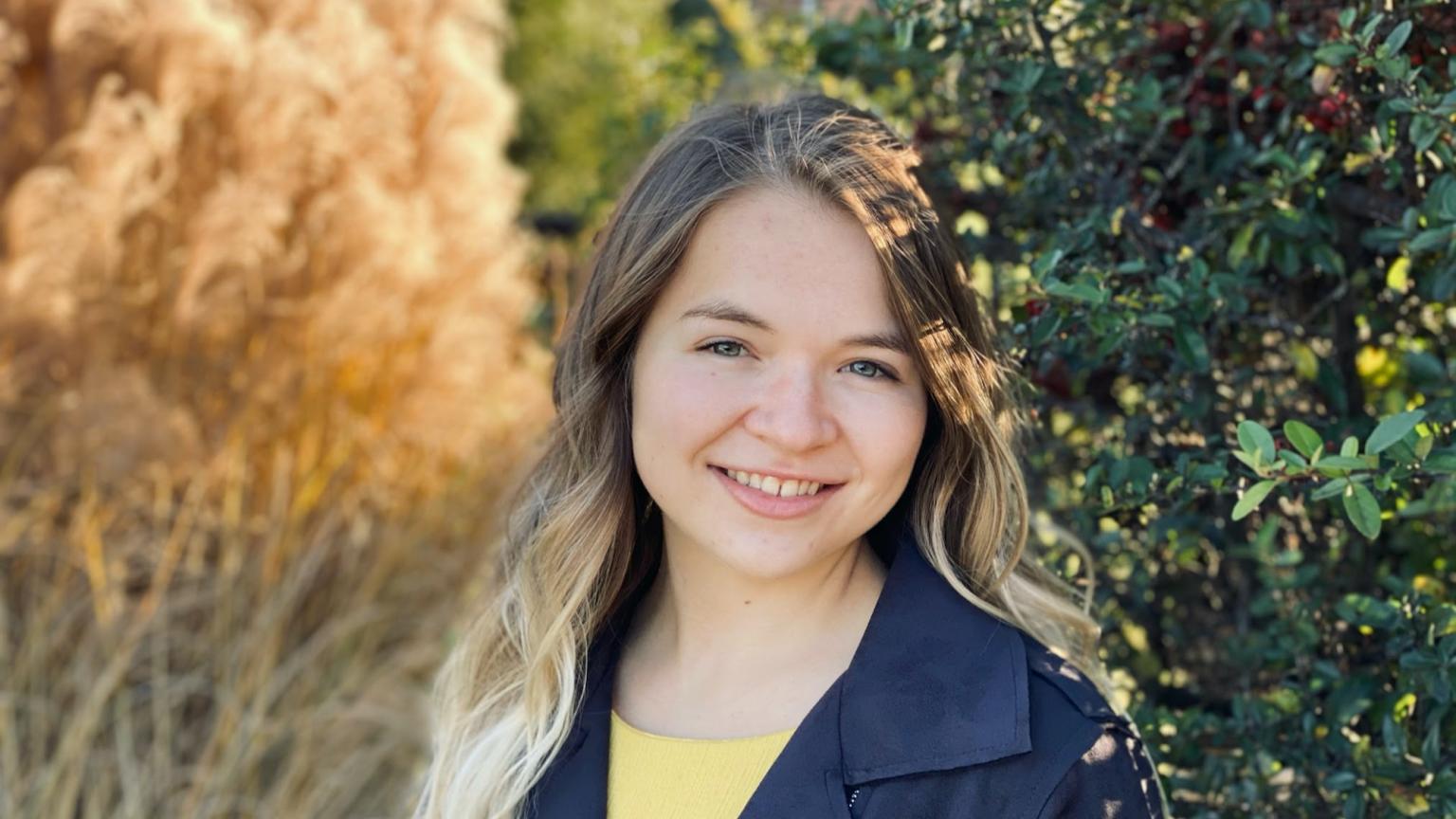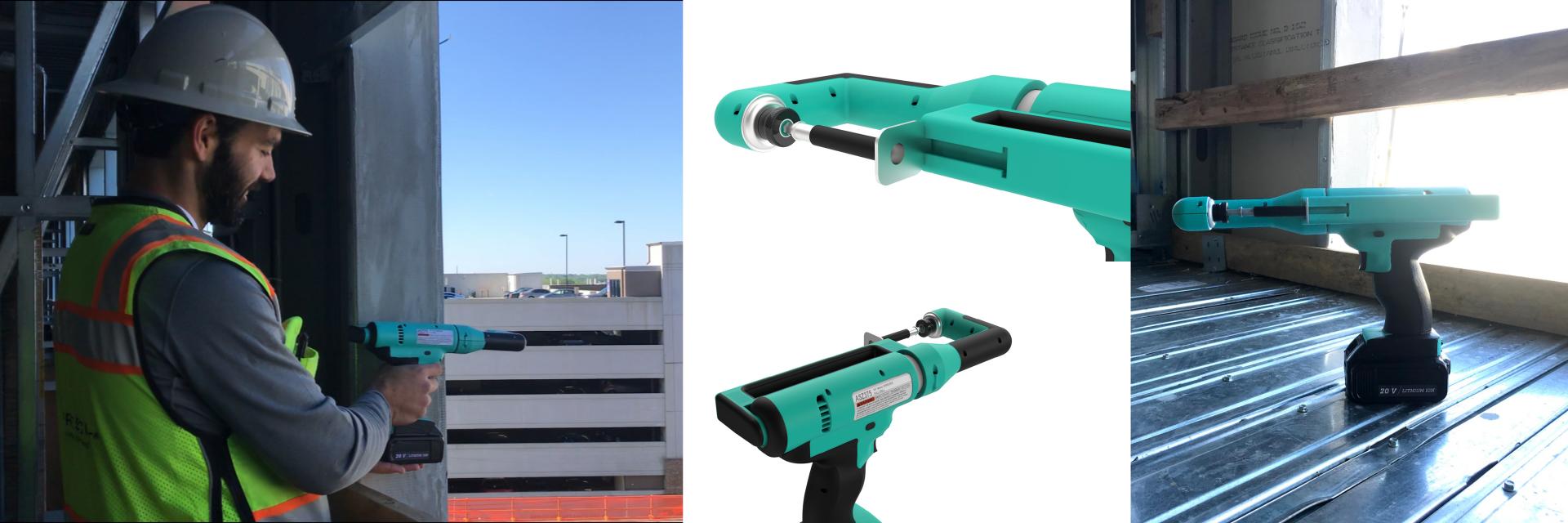
Pull Drill
Class: ID 2024 | Instructor: Lisa Marks
Though this project reaches back to my Sophomore year, it is one that remains pivotal in my growth as a designer. This is the project where I discovered my passion for design research, as well as the power tool & construction industry. It’s the project I learned that a determination to do something that might seem out of reach, can have incredible results.
The premise of this project was to design a hand tool. I wanted to do something for the construction industry, so I set off bouncing around to various construction sites in Atlanta. I asked questions about problems with current tools to workers coming off site, but, at first, I got a lot of “can’t think of anything.” But I kept asking, and eventually I ended up asking a Superintendent who invited me onsite. I went to safety training at 7am with all the other new workers, and got to observe and ask questions to workers on the jobsite. I learned so much being immersed this way, which eventually led to the development of the Pull Drill. The Pull Drill is designed to attach DensGlass to the outside of a building, while the worker is on the inside. This not only improves safety by minimizing the need to lean outside the building and repeat awkward repetitive motions with a standard drill, but also allows workers to get DensGlass up faster, meaning electrical and internals can be installed sooner, saving time & cost on the project as a whole.
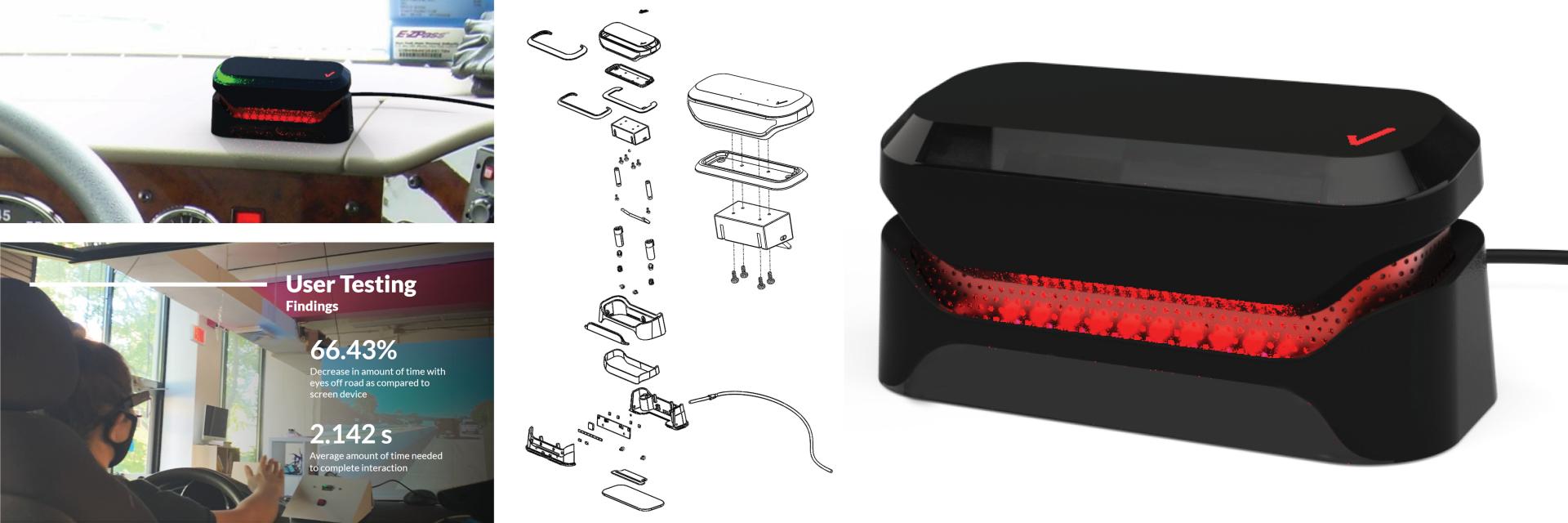
Verizon Connect: In-Vehicle Communication
Teammates:
Andres Amundson, Julia Pokrzywa, and Yui-Ting Tarn
Class: ID 4081 | Instructors: Wayne Li, Dr. Stephen Sprigle
On this project, I worked with an amazing team of Industrial Designers and Mechanical Engineers. We were sponsored by Verizon Connect, a provider of fleet management software leveraging the Verizon network, to create an audio interaction device within the cab of a commercial fleet vehicle. Our target users were long haul truck drivers.
Due to the current breakdown in communication between long haul truck drivers and their fleet managers while driving, there is an opportunity to develop an in-vehicle communication device that interfaces with Verizon Connect’s existing fleet management software to allow long-haul trucker drivers to communicate with their fleet manager while driving. The device designed meets this opportunity by providing a hardware-based, tactile and audio experience that minimizes driver distraction and allows drivers to safely communicate with their fleet manager while driving. Through user testing in Georgia Tech’s Human Machine Interaction Lab with Tobii eye tracking glasses to record eye glance behavior, it was verified with 99% confidence that there was a 66.43% decrease in time of eyes off road when using the device prototype as compared to a mobile phone. The device also respects the driver’s privacy within their truck cab by providing them the ability to turn the device’s microphones on or off. The device was developed from a conceptual design into a production-ready CAD model and fabrication package, making it a product grounded in feasibility at production scale. Long haul truck drivers may soon have the capability to safely communicate with their fleet manager while driving.

Voir
Teammates:
Jonathan Schmidt, Chaselyn Baca, and Michael Stocker
Class: ID 3824 | Instructors: Kevin Shankwiler and Yaling Liu
Voir is a transparent face mask designed to facilitate communication for urban professionals in a Covid and post-Covid world. Voir’s transparent front window is made from injection molded TPX, for its exceptional clarity and audibility, and has coatings to prevent fogging, scratching, and glare. This clarity ensures a clear visual of the user’s facial expressions, providing those they are communicating with the ability to read their lips. The ability to read lips is especially import in noisy environments, such as those encountered throughout the city and in collaborative workspaces. That’s why it’s so valuable that Voir’s prototype was found to have 34% better word recognition in an environment with background noise as compared to a standard surgical mask. In addition to clarity of communication, Voir also provides amble protection. The multi-layer filters are designed to be as breathable as they are efficient at trapping particles. Voir’s contoured ear piece and adjustment knob ensure a comfortable fit every time.
This project hits close to home for me, as I have a hearing loss and depend heavily on lip reading to understand people. The way most masks are now makes it difficult for me to understand others, and as a result, to be able to respond. The widespread use of masks like Voir would not only mean I could understand others, but it would also give me my voice back.
Reflecting on this project, I learned a lot about motivating a team and finding ways to turn challenges into opportunities for growth.
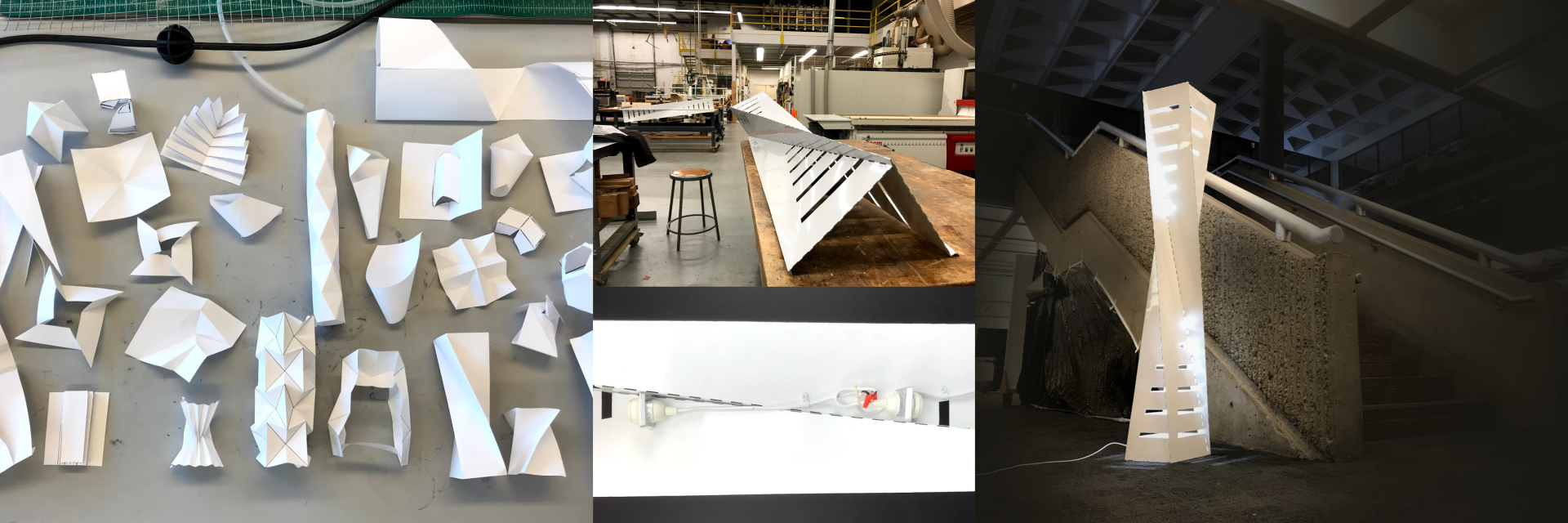
Lamp
Class: ID 2024 | Instructor: Lisa Marks
Ah yes, the iconic IDGT metal lamp project. This project was a step out of my comfort zone in more ways than one. I started off experimenting with the way a flat sheet can be folded and cut to create something three dimensional, looking to the large architectural origami structures displayed on the 3rd floor of the Architecture West building for inspiration. Even in these early stages, I began to consult with metal manufacturing experts at Georgia Tech’s Digital Fabrication laboratory to assess feasibility of the designs, and how they might be better optimized for manufacturing in metal using the breaks and waterjet in the facility. As the project progressed, it became clear to me how integral this early communication was to my design process to ensure that my design worked with the manufacturing methods, not against them. The finalized lamp holds an intriguing form itself, almost defying what a sheet of ridgid metal should be capable of, but also cultivates its light into beautiful forms of brightness and shadow as well. The lamp was wired to code, with attention paid to even the smallest details, like applying a grommet where the cord passes through the metal.
This project inspired many more throughout my time at Georgia Tech, including taking an Origami Engineering class (CEE 4803 with Professor Paulino if anyone is interested in taking it themselves!) and a flat foldable kitchen utensil organizer, KUO, which I will be adding to this page next Spring (be sure to check back!).
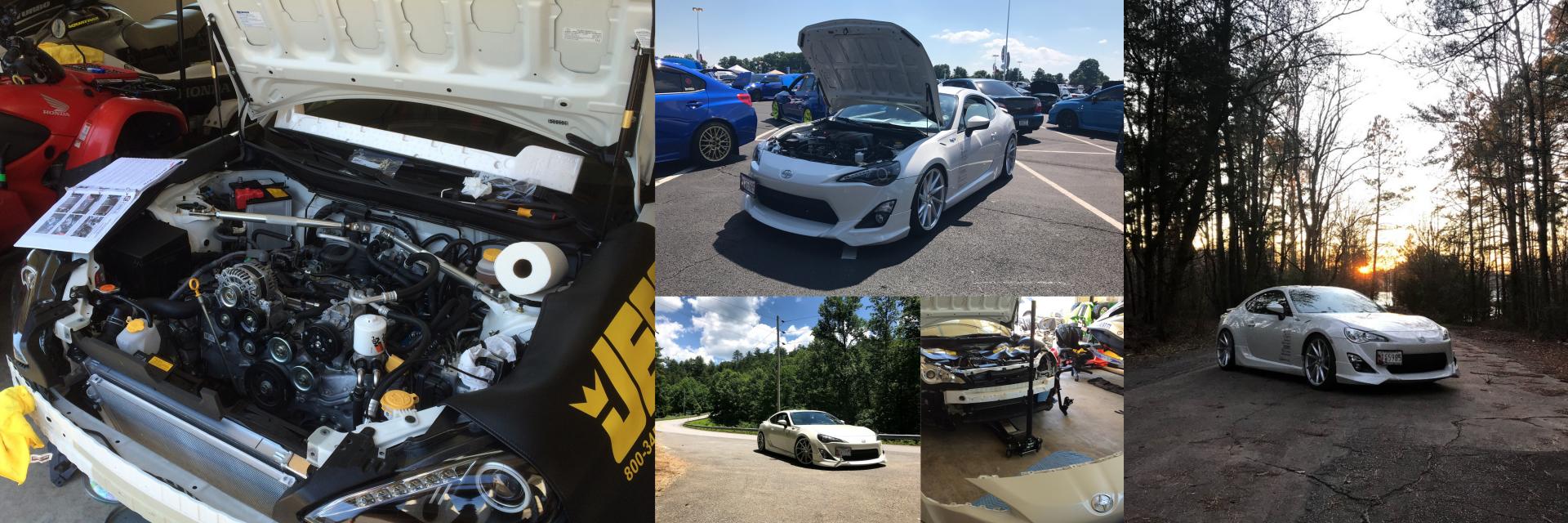
Modified Scion FRS
Solo Project
This is my car, a heavily modified, suped-up Scion FRS. I have done all the work on it myself, with the help of my dad. Supercharger, coil-overs, sway bar, headers, you name it – there’s a good chance I’ve done it or considered it. When I got this car, I only intended to modify a couple things, exhaust, wheels and tires, but once I started working on my car, I enjoyed it so much, it spiraled from there. If you want a complete list of mods, feel free to reach out, I’d love to chat about them.
In addition to all the adventures I’ve had working on my car, I’ve also had lots of adventures driving it. I moved coast to coast in it during the Summer of 2019 for an internship with Northrop Grumman out in California (that resulted in another working on the car adventure – raising it up in the hotel parking lot because I was too low to make it in the parking garage where I was moving). Made of lot of trips up and down the east coast going between college and home (blowing a tire in the middle of a 500 mile trip certainly was an adventure). Taken her out on lots of windy roads from the mountains to the country. I even auto-crossed for a bit back in high school.
I worked hard to build this car & it’s certainly been with me through a lot, but we’ve still got miles and miles to go.
